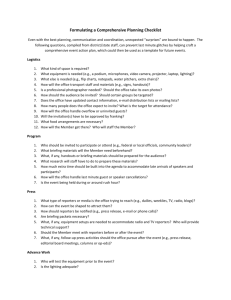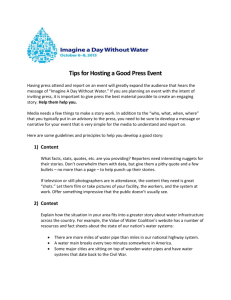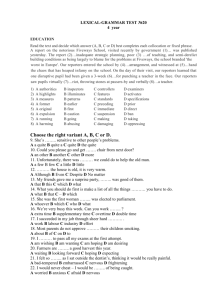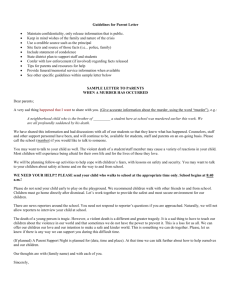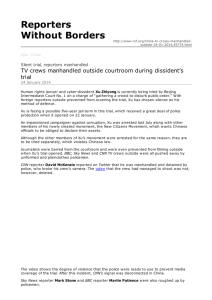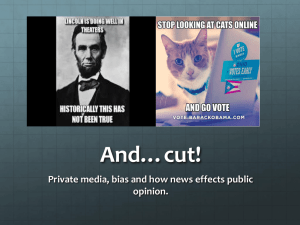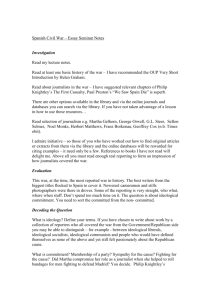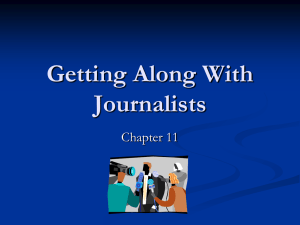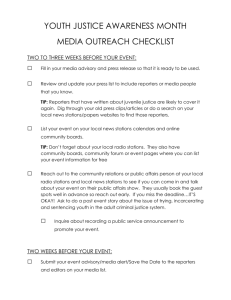LTAUS Media Tips
advertisement
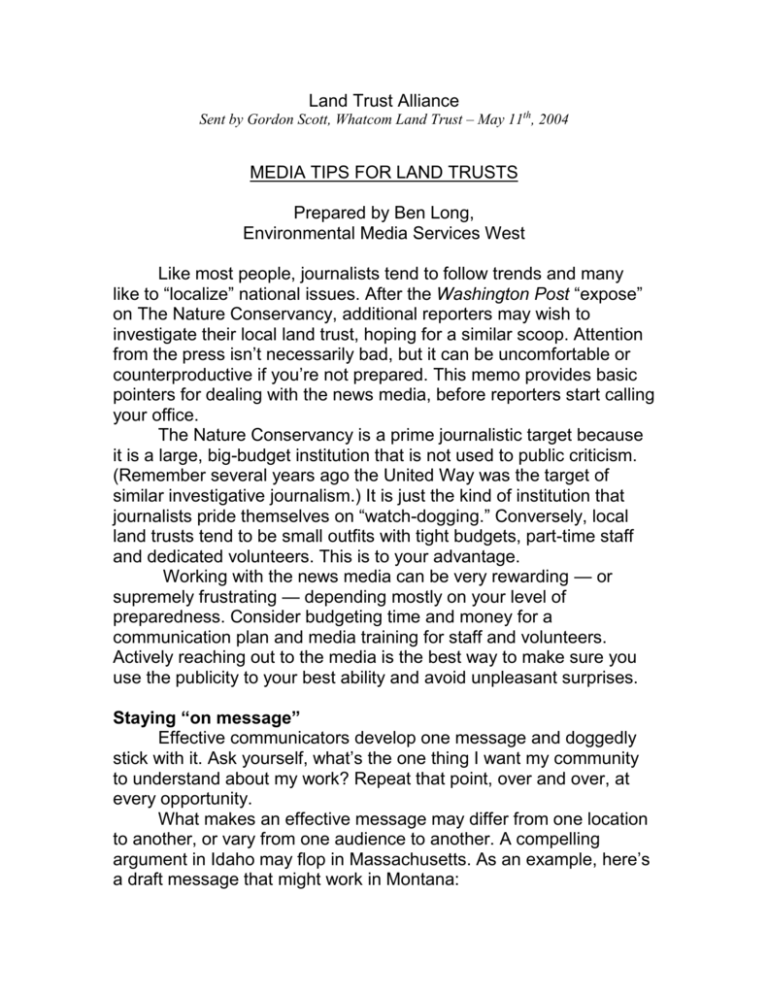
Land Trust Alliance Sent by Gordon Scott, Whatcom Land Trust – May 11th, 2004 MEDIA TIPS FOR LAND TRUSTS Prepared by Ben Long, Environmental Media Services West Like most people, journalists tend to follow trends and many like to “localize” national issues. After the Washington Post “expose” on The Nature Conservancy, additional reporters may wish to investigate their local land trust, hoping for a similar scoop. Attention from the press isn’t necessarily bad, but it can be uncomfortable or counterproductive if you’re not prepared. This memo provides basic pointers for dealing with the news media, before reporters start calling your office. The Nature Conservancy is a prime journalistic target because it is a large, big-budget institution that is not used to public criticism. (Remember several years ago the United Way was the target of similar investigative journalism.) It is just the kind of institution that journalists pride themselves on “watch-dogging.” Conversely, local land trusts tend to be small outfits with tight budgets, part-time staff and dedicated volunteers. This is to your advantage. Working with the news media can be very rewarding — or supremely frustrating — depending mostly on your level of preparedness. Consider budgeting time and money for a communication plan and media training for staff and volunteers. Actively reaching out to the media is the best way to make sure you use the publicity to your best ability and avoid unpleasant surprises. Staying “on message” Effective communicators develop one message and doggedly stick with it. Ask yourself, what’s the one thing I want my community to understand about my work? Repeat that point, over and over, at every opportunity. What makes an effective message may differ from one location to another, or vary from one audience to another. A compelling argument in Idaho may flop in Massachusetts. As an example, here’s a draft message that might work in Montana: “Montana is changing before our eyes. The freedoms and open land we have always enjoyed are rapidly falling to the crush of new development. Farmers, ranchers and small woodlot owners are finding it more difficult to keep their land in production and pass their traditional livelihoods to their children. The Big Sky Land Trust helps these folks stay on the land through a tool called a conservation easement. This private, voluntary agreement doesn’t involve the government, and it respects private property rights. It is one of the best ways to ensure the wise use of our natural resources for generations to come. This is just one way we protect the clean water and wildlife habitat on private property, where Montanans hunt and fish.” If a reporter wishes to paint your land trust with the same brush as The Nature Conservancy, I suggest highlighting the differences between local land trusts and TNC, all the while emphasizing your responsibilities to donors and the public. There’s no need to state a judgment about the TNC controversy. Something like: “I don’t know how The Nature Conservancy operates but I can tell you about us; we are small and local. We get by on an operating budget of $X a year and a part-time director. Our board is made up of local ranchers and farmers who grew up in this valley. We survive because of local support. Maintaining local trust is a job we take very seriously.” In short, emphasize that you are local, grassroots and dedicated to community values. Illustrate that you have built-in oversight, and that you emphasize voluntary, non-regulatory conservation that respects property rights. What makes a good message? • Messages should be short and simple. Craft a message that any 10-year-old can easily and instantly understand. • Messages should focus on core values shared by your community. Core values include freedom; love of Nature; ability to take care of our selves and our families; work; community. • A message is different from a slogan or sound bite. One of my favorite slogans from the Montana Land Reliance is “Cows, not Condos!” • Avoid jargon and technicalities. Conservationists waste a lot of time talking over peoples’ heads. • Use alternative spokespeople. People will trust “regular folks” far more than they will trust environmental group staffers. Your community needs to hear from “every day people” who support land trusts. These are people like farmers, parents, teachers, and outdoors folk. You are probably surrounded by these people — board members, donors, volunteers, and partners. Identify, cultivate and train these folks until they’re comfortable with your message. Then steer reporters to them. Dealing with Reporters • Be as polite and as open as possible with reporters. • Return phone calls promptly. Reporters are very sensitive to their deadlines. • Be honest. • Relax and smile. Frowns and stern faces make you look like a sourpuss, especially on television. • Avoid the trap of saying “no comment,” which invariably sounds like you’re hiding something. If you’re not sure how to answer a given question, try something like: “I don’t know enough about that issue to state an opinion, but can get back to you after I look into it.” • Use guest editorials and letters-to-the-editor to get your message across. Consider an ad campaign. • Remember radio and TV is where most folks get their information. Don’t neglect these media. Too many conservationists focus too much on print. • Have key facts readily available. How many acres have you protected? What is your annual budget? Who are your key supporters? • Regularly reach out to the media by telling your group’s story. Develop working relationships with key reporters, becoming a trusted source of information. • If in error, be contrite. If caught in a screw up, the best strategy is to admit your mistake and show how you’ve learned from it. The average reader is willing to forgive, but is turned off by defensiveness. • Be honest with yourself. During your daily actions, ask yourself: Would I be comfortable if what I am doing were covered on tonight’s TV news? If the answer is yes, you have little to fear. For more information about media relations, contact the Environmental Media Services West (in Seattle, 206.374.7795, San Francisco 415.561.2325 Montana at 406.257.8302).
